Abstract
We have evaluated an intracardiac technique for the study of the electrophysiological patterns of early or subendocardial ischaemia in man. Simultaneous recordings of the paced endocardial evoked response and monophasic action potentials were obtained during pacing stress testing in 10 patients with reversible myocardial ischaemia. Early patterns of change occurred in both these recordings in response to regional ischaemia. Abnormal rate corrected shortening of the local repolarisation time in the paced endocardial evoked response from the left ventricular ischaemic zone diverging from control non-ischaemic values by a mean of 10.6% was paralleled by decreases in the simultaneous paced monophasic action potentials duration. A differential delay in the local activation time and conduction was also documented by the paced endocardial evoked response and monophasic action potential electrodes. Non-ischaemic control zones showed no changes in the pattern of activation and repolarisation. Disparate repolarisation times and asynchronous activation within the myocardium were thus consistently demonstrated during regional ischaemia. These changes in the endocardial paced evoked response and monophasic action potentials always preceded the appearance and regression of the clinical ischaemia. Intracavitary recordings may thus provide earlier and more sensitive detection of regional ischaemia during cardiac catheterisation or coronary artery surgery. The study of the patterns of activation and response could permit the assessment of interventions on the early electrical changes of ischaemia, and may bridge the gap between in vitro studies and the electrophysiological studies performed upon the intact heart.
Full text
PDF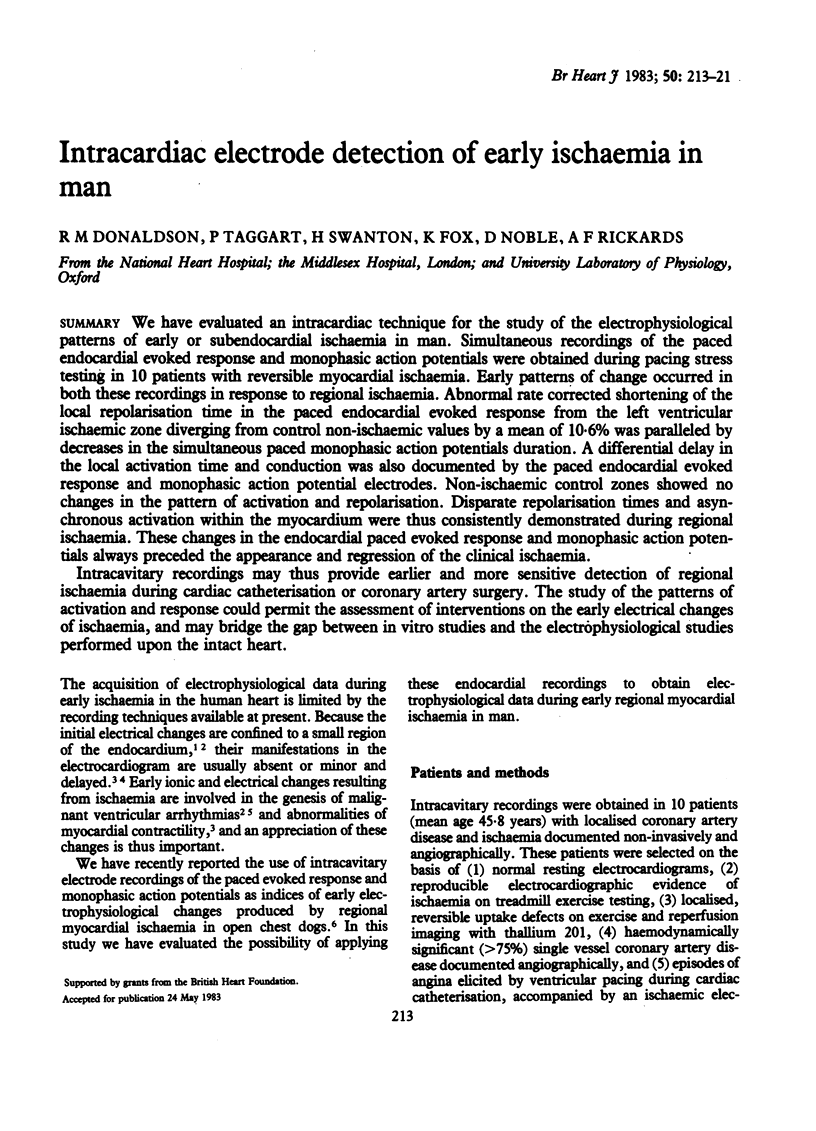
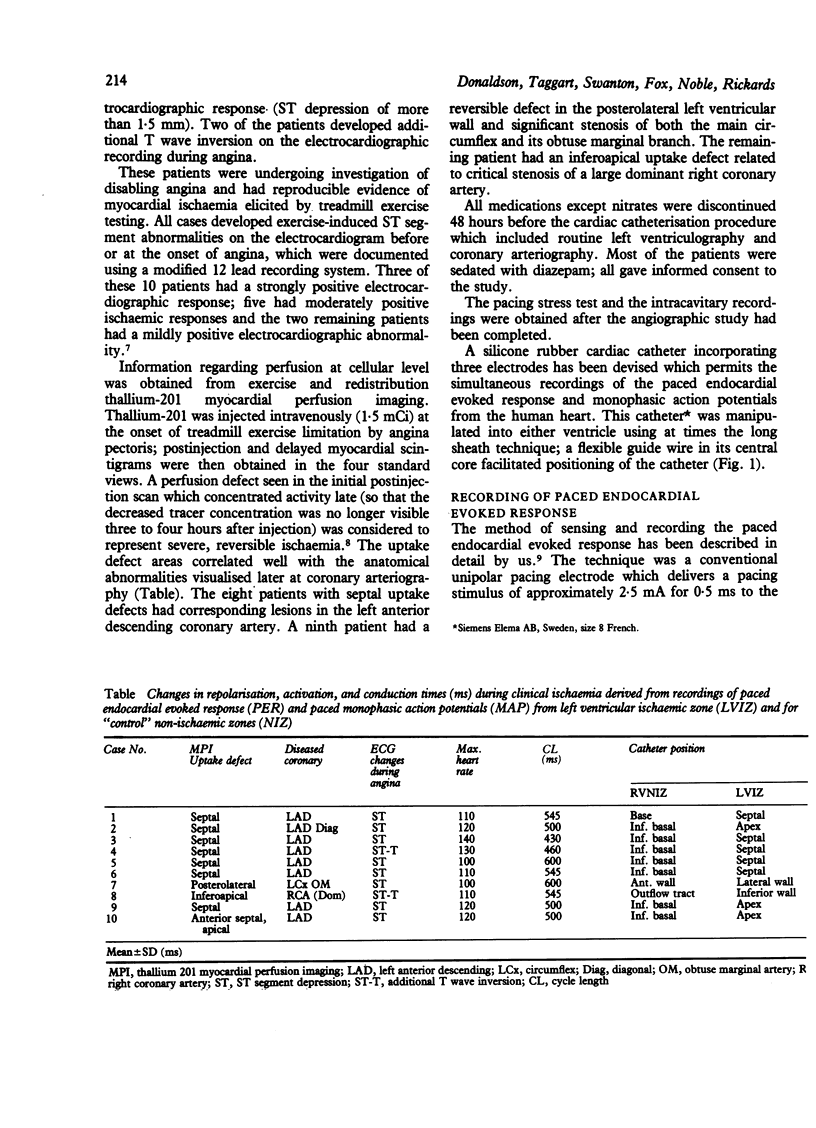
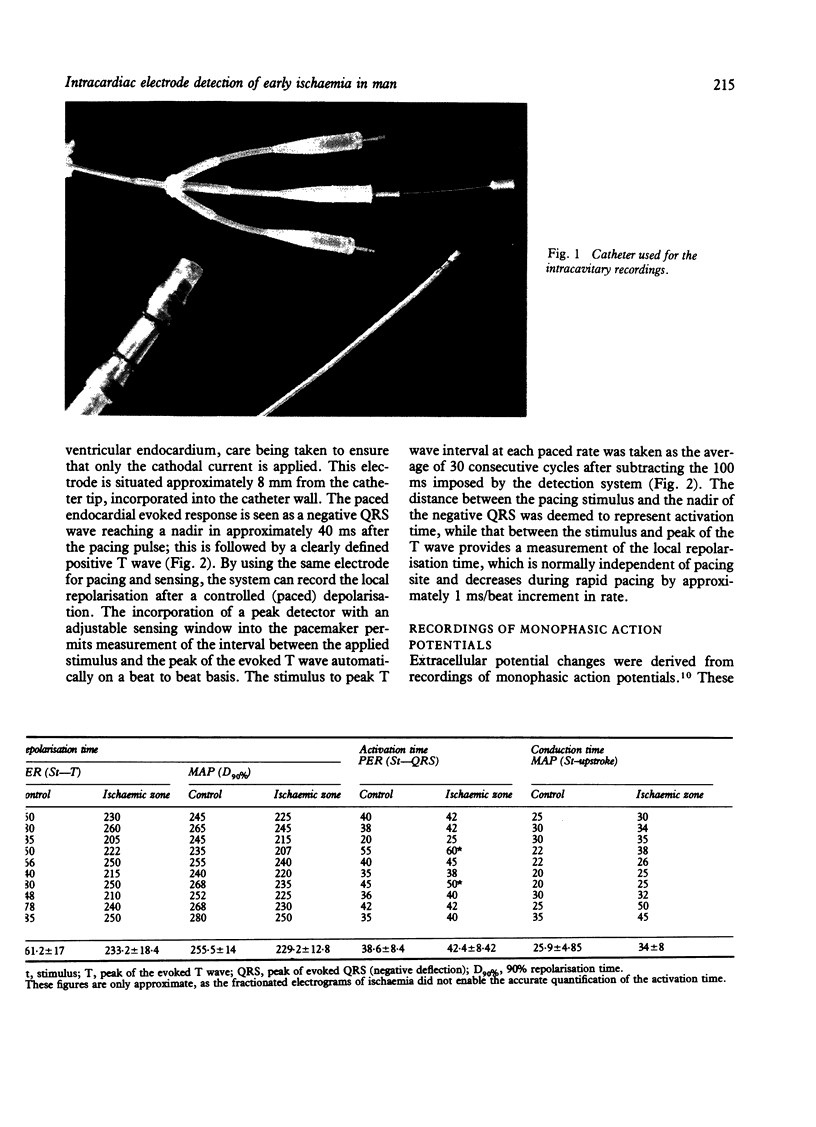
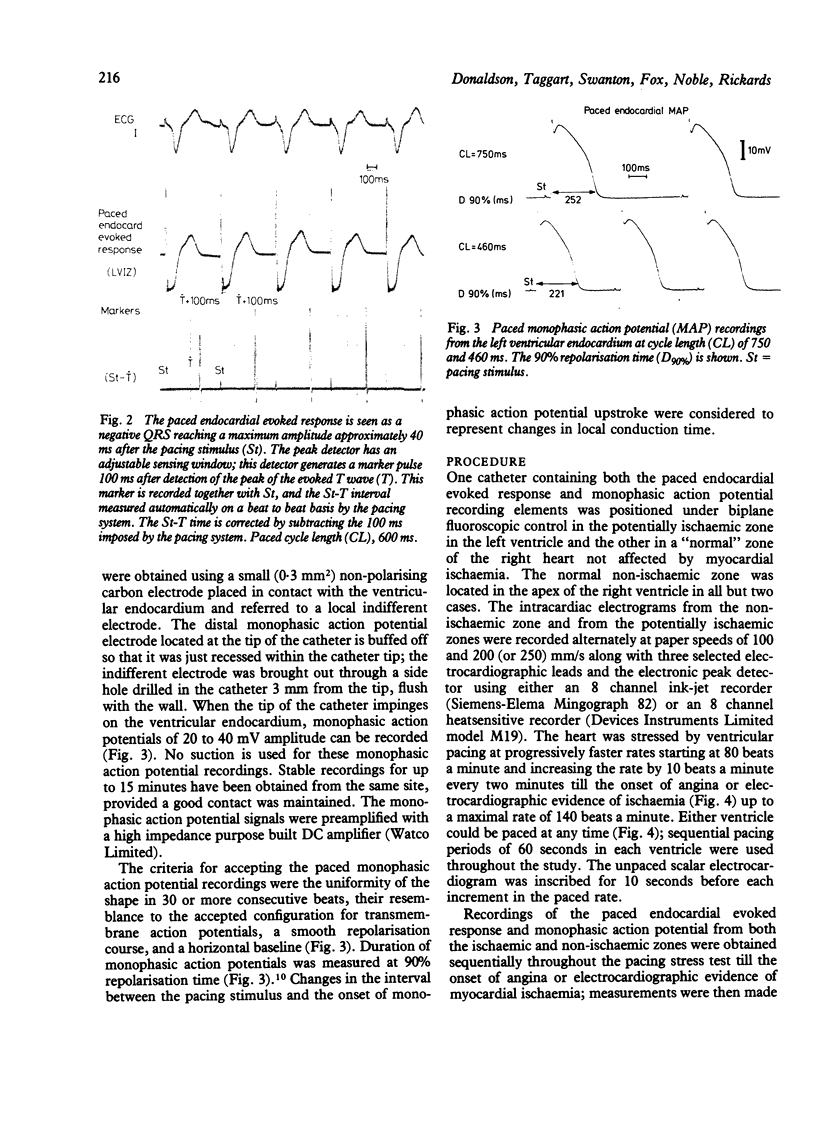
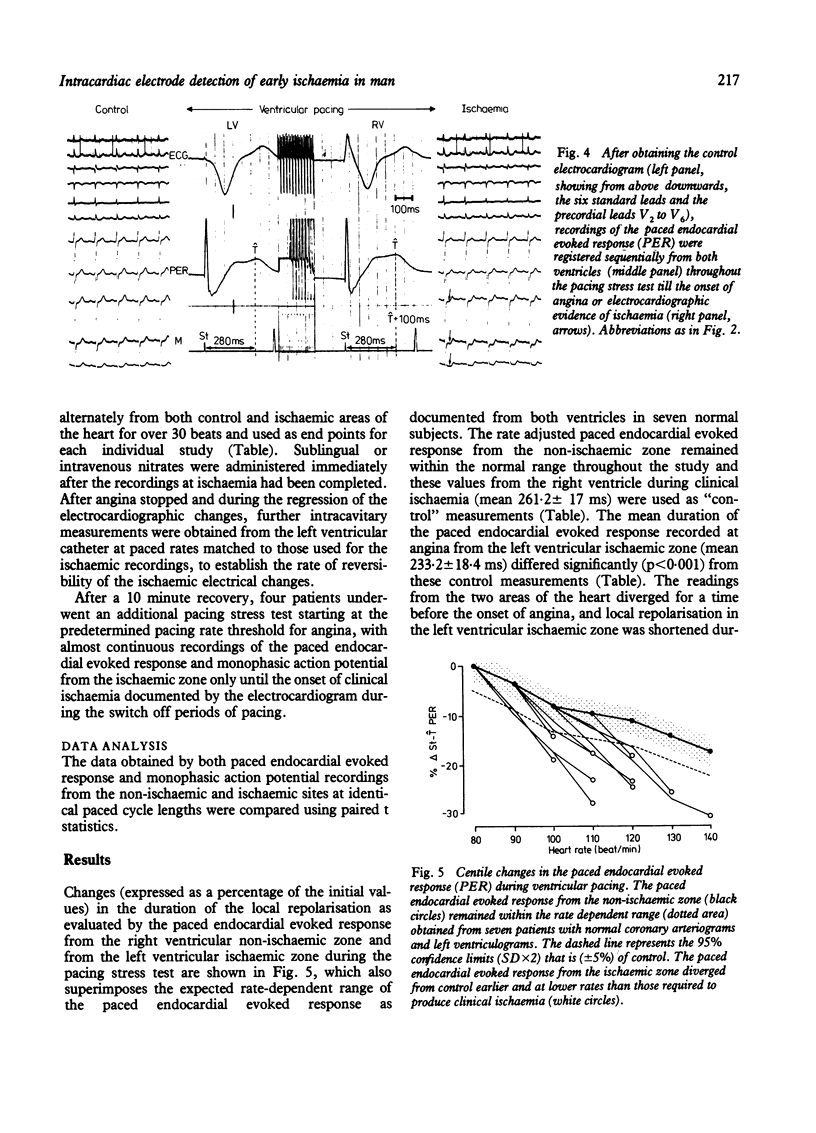
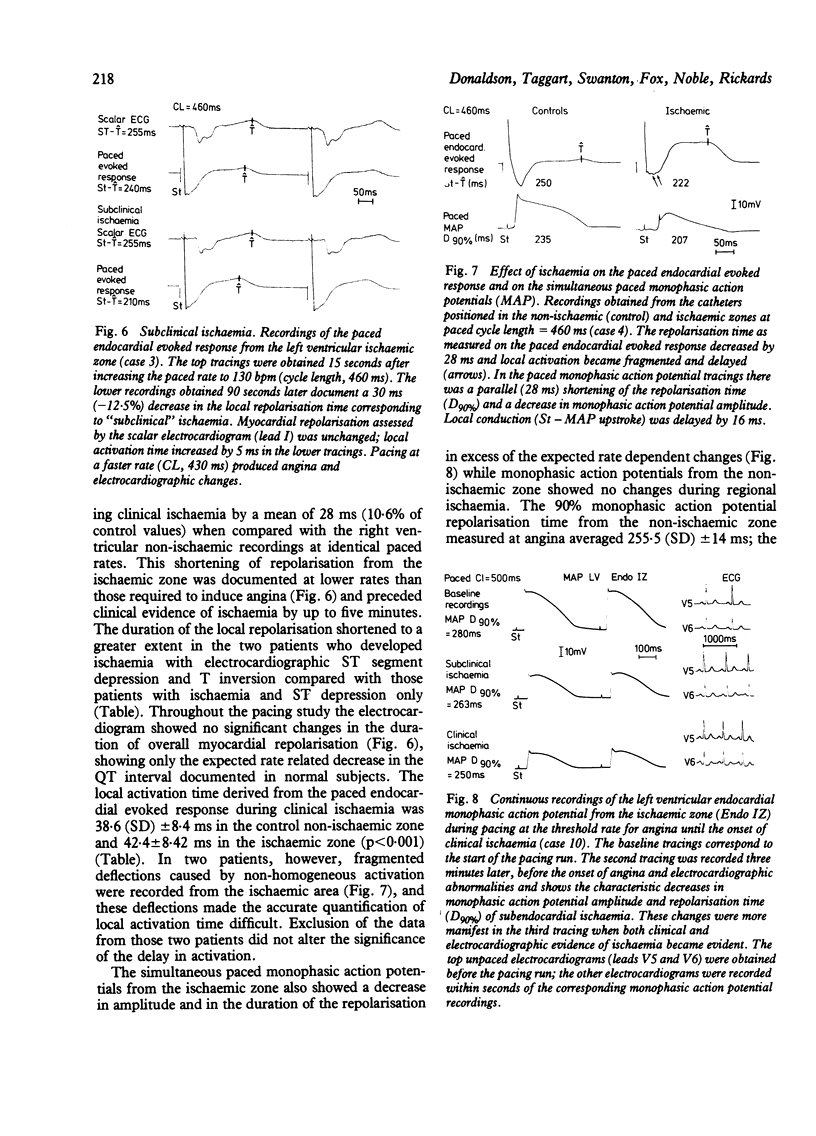
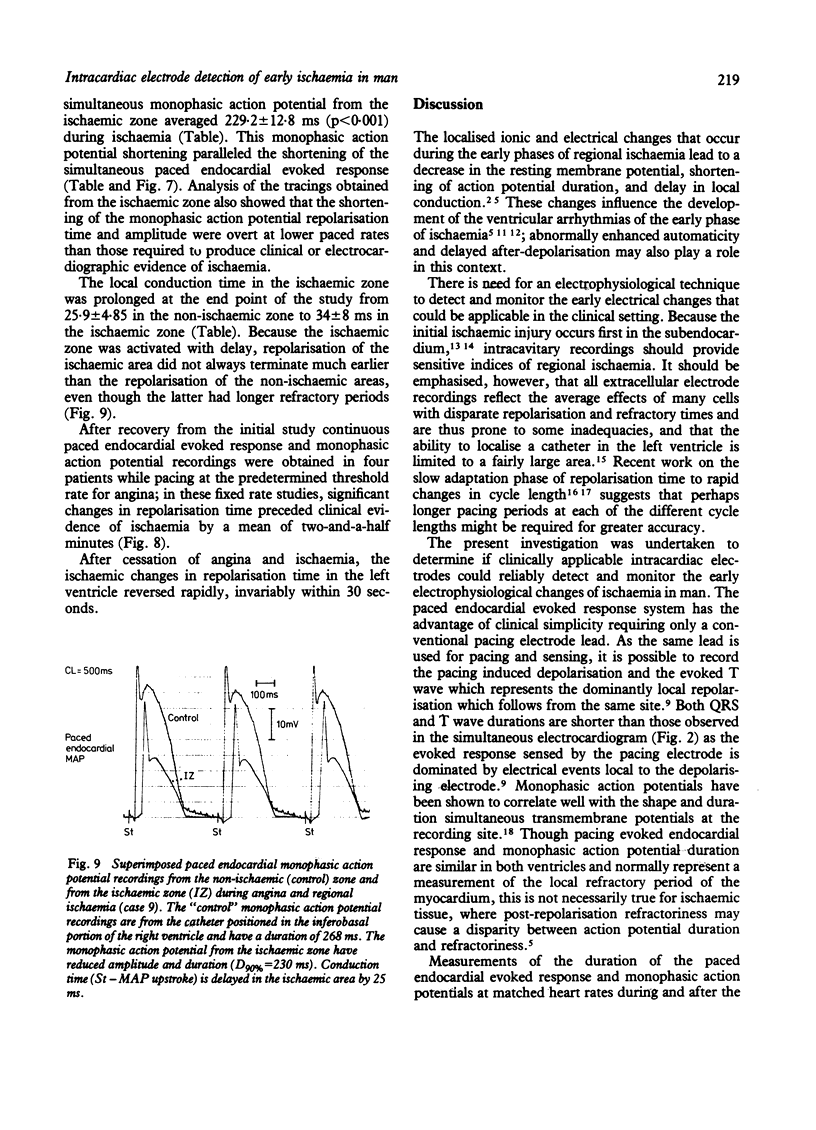
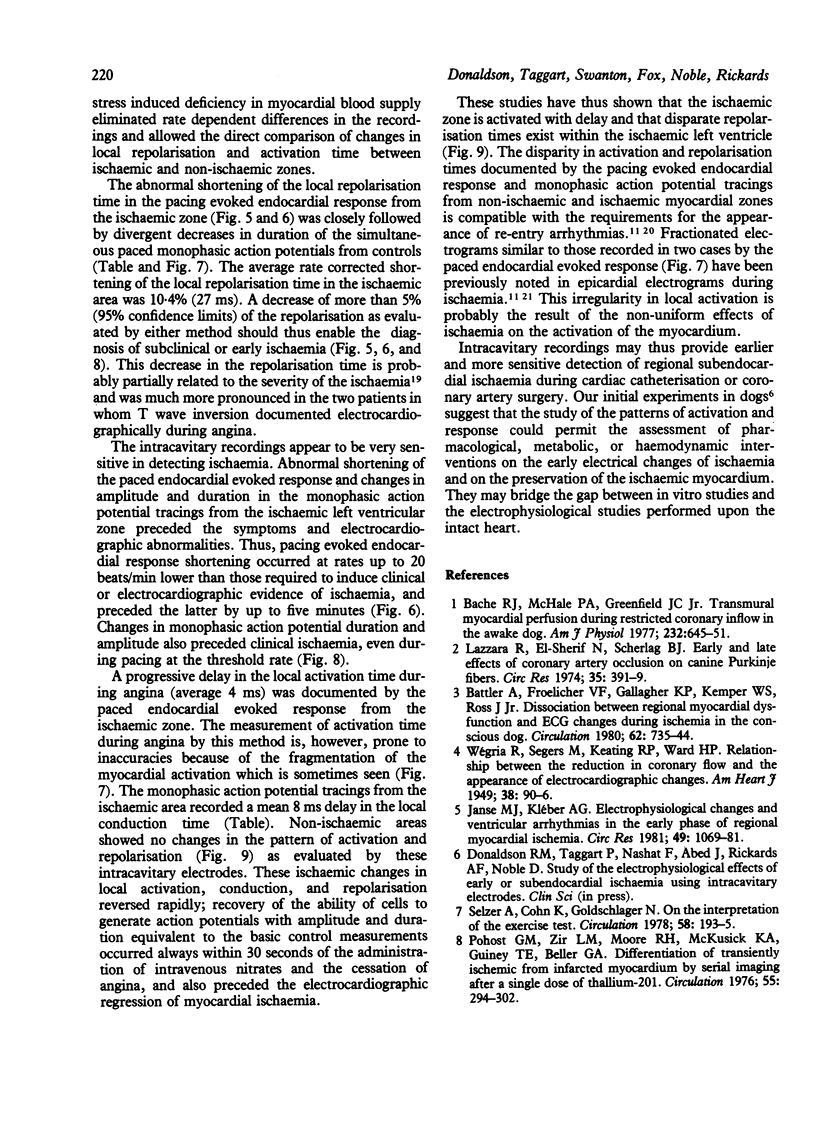

Images in this article
Selected References
These references are in PubMed. This may not be the complete list of references from this article.
- Arnold L., Page J., Attwell D., Cannell M., Eisner D. A. The dependence on heart rate of the human ventricular action potential duration. Cardiovasc Res. 1982 Oct;16(10):547–551. doi: 10.1093/cvr/16.10.547. [DOI] [PubMed] [Google Scholar]
- Battler A., Froelicher V. F., Gallagher K. P., Kemper W. S., Ross J. Dissociation between regional myocardial dysfunction and ECG changes during ischemia in the conscious dog. Circulation. 1980 Oct;62(4):735–744. doi: 10.1161/01.cir.62.4.735. [DOI] [PubMed] [Google Scholar]
- Boineau J. P., Cox J. L. Slow ventricular activation in acute myocardial infarction. A source of re-entrant premature ventricular contractions. Circulation. 1973 Oct;48(4):702–713. doi: 10.1161/01.cir.48.4.702. [DOI] [PubMed] [Google Scholar]
- Donaldson R. M., Rickards A. F. Evaluation of drug-induced changes in myocardial repolarisation using the paced evoked response. Br Heart J. 1982 Oct;48(4):381–387. doi: 10.1136/hrt.48.4.381. [DOI] [PMC free article] [PubMed] [Google Scholar]
- Elharrar V., Gaum W. E., Zipes D. P. Effect of drugs on conduction delay and incidence of ventricular arrhythmias induced by acute coronary occlusion in dogs. Am J Cardiol. 1977 Apr;39(4):544–549. doi: 10.1016/s0002-9149(77)80164-1. [DOI] [PubMed] [Google Scholar]
- HOFFMAN B. F., CRANEFIELD P. F., LEPESCHKIN E., SURAWICZ B., HERRLICH H. C. Comparison of cardiac monophasic action potentials recorded by intracellular and suction electrodes. Am J Physiol. 1959 Jun;196(6):1297–1301. doi: 10.1152/ajplegacy.1959.196.6.1297. [DOI] [PubMed] [Google Scholar]
- Janse M. J., Kléber A. G. Electrophysiological changes and ventricular arrhythmias in the early phase of regional myocardial ischemia. Circ Res. 1981 Nov;49(5):1069–1081. doi: 10.1161/01.res.49.5.1069. [DOI] [PubMed] [Google Scholar]
- Lazzara R., El-Sherif N., Hope R. R., Scherlag B. J. Ventricular arrhythmias and electrophysiological consequences of myocardial ischemia and infarction. Circ Res. 1978 Jun;42(6):740–749. doi: 10.1161/01.res.42.6.740. [DOI] [PubMed] [Google Scholar]
- Lazzara R., el-Sherif N., Scherlag B. J. Early and late effects of coronary artery occlusion on canine Purkinje fibers. Circ Res. 1974 Sep;35(3):391–399. doi: 10.1161/01.res.35.3.391. [DOI] [PubMed] [Google Scholar]
- Marcus M. L., Kerber R. E., Ehrhardt J., Abboud F. M. Three dimensional geometry of acutely ischemic myocardium. Circulation. 1975 Aug;52(2):254–263. doi: 10.1161/01.cir.52.2.254. [DOI] [PubMed] [Google Scholar]
- Olsson B., Varnauskas E., Korsgren M. Further improved method for measuring monophasic action potentials of the intact human heart. J Electrocardiol. 1971;4(1):19–23. doi: 10.1016/s0022-0736(71)80045-6. [DOI] [PubMed] [Google Scholar]
- Pohost G. M., Zir L. M., Moore R. H., McKusick K. A., Guiney T. E., Beller G. A. Differentiation of transiently ischemic from infarcted myocardium by serial imaging after a single dose of thallium-201. Circulation. 1977 Feb;55(2):294–302. doi: 10.1161/01.cir.55.2.294. [DOI] [PubMed] [Google Scholar]
- Rivas F., Cobb F. R., Bache R. J., Greenfield J. C., Jr Relationship between blood flow to ischemic regions and extent of myocardial infarction. Serial measurement of blood flow to ischemic regions in dogs. Circ Res. 1976 May;38(5):439–447. doi: 10.1161/01.res.38.5.439. [DOI] [PubMed] [Google Scholar]
- Selzer A., Cohn K. On the interpretation of the exercise test. Circulation. 1978 Aug;58(2):193–195. doi: 10.1161/01.cir.58.2.193. [DOI] [PubMed] [Google Scholar]
- Waldo A. L., Kaiser G. A. A study of ventricular arrhythmias associated with acute myocardial infarction in the canine heart. Circulation. 1973 Jun;47(6):1222–1228. doi: 10.1161/01.cir.47.6.1222. [DOI] [PubMed] [Google Scholar]
- Waxman H. L., Josephson M. E. Ventricular activation during ventricular endocardial pacing: I. Electrocardiographic patterns related to the site of pacing. Am J Cardiol. 1982 Jul;50(1):1–10. doi: 10.1016/0002-9149(82)90002-9. [DOI] [PubMed] [Google Scholar]




